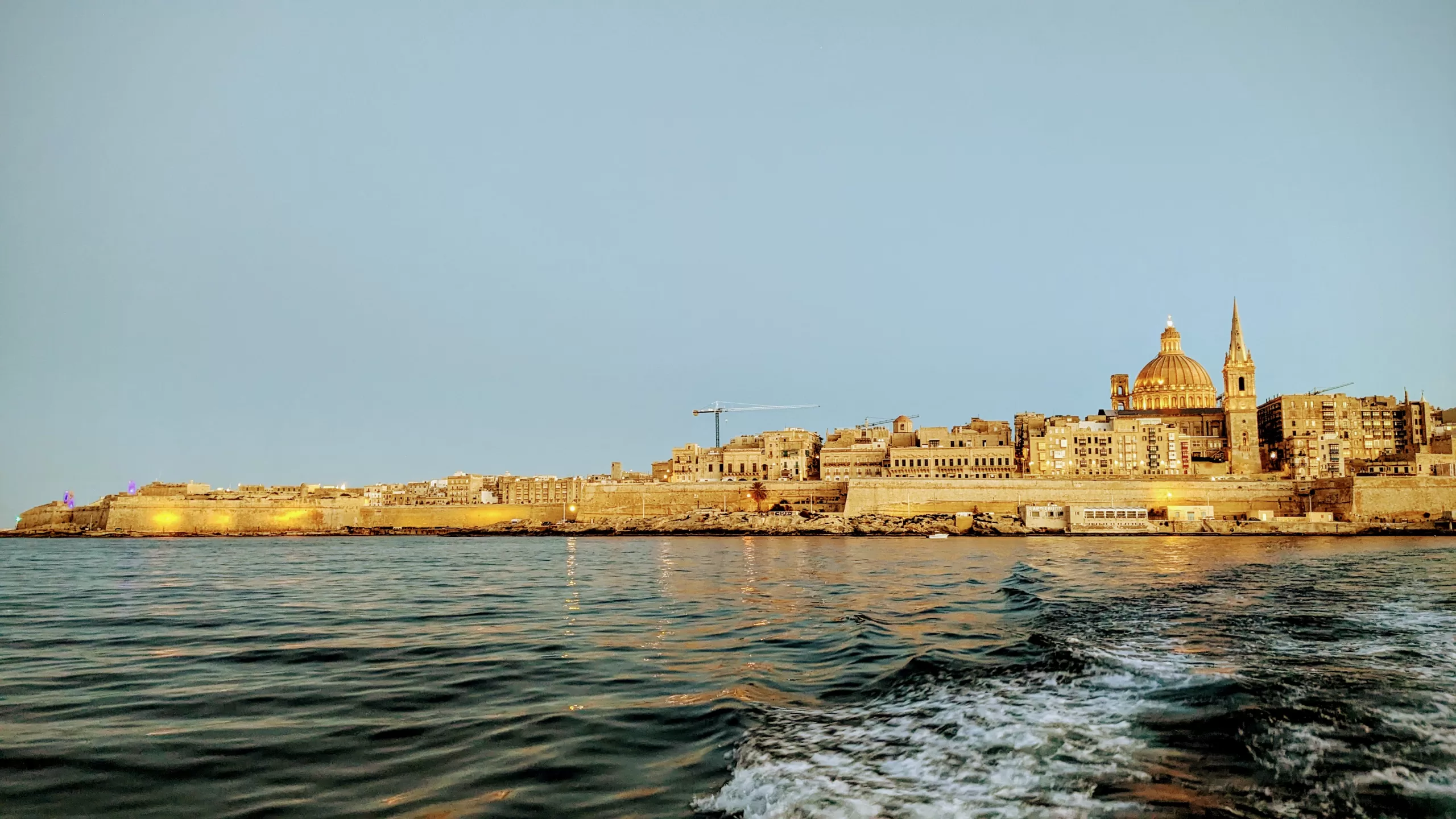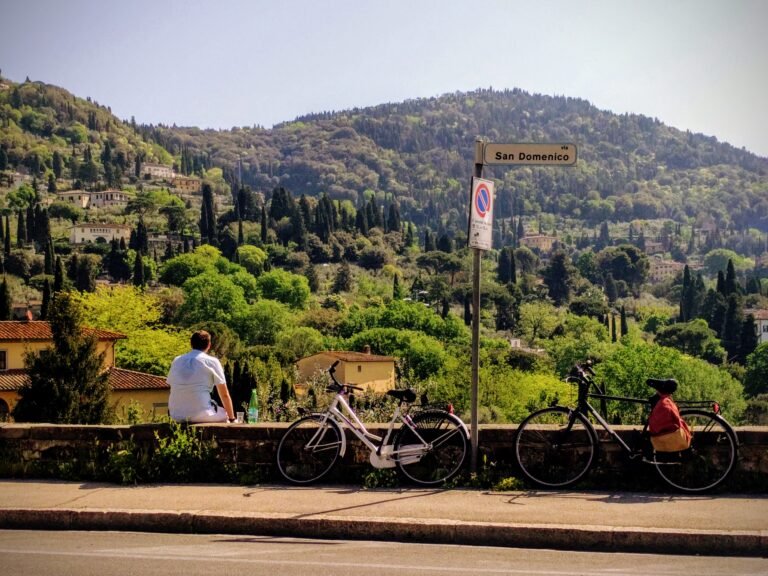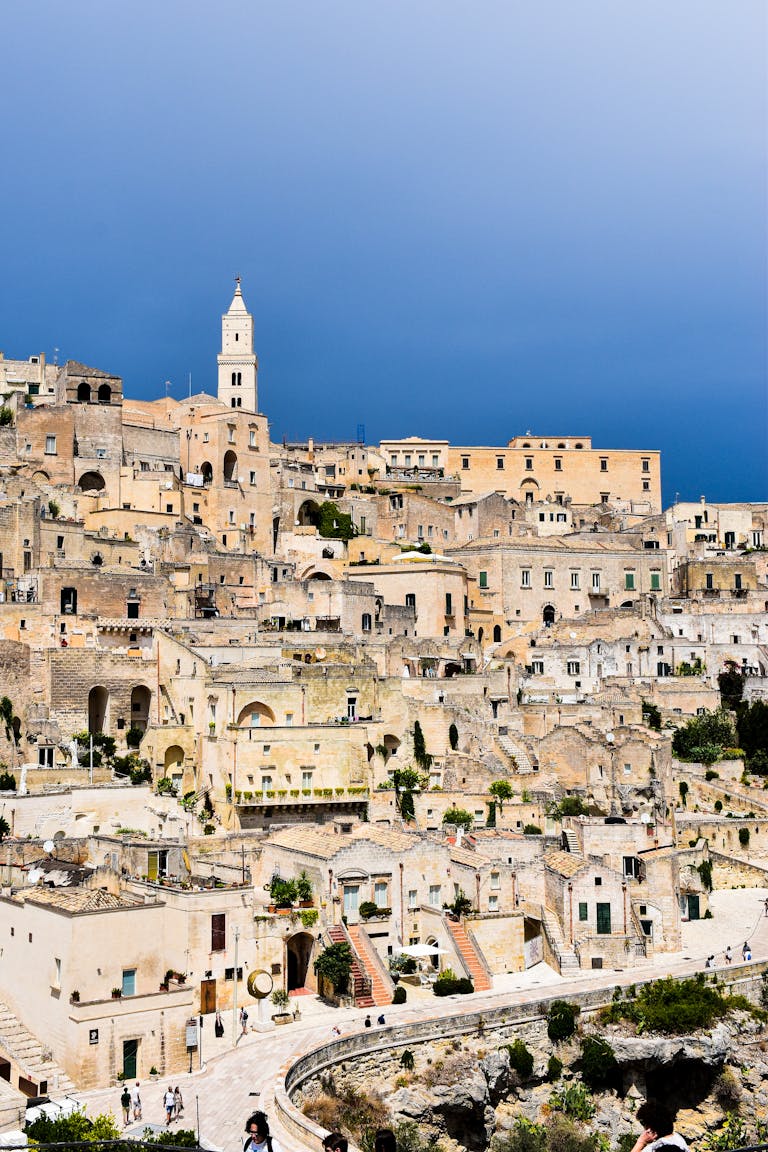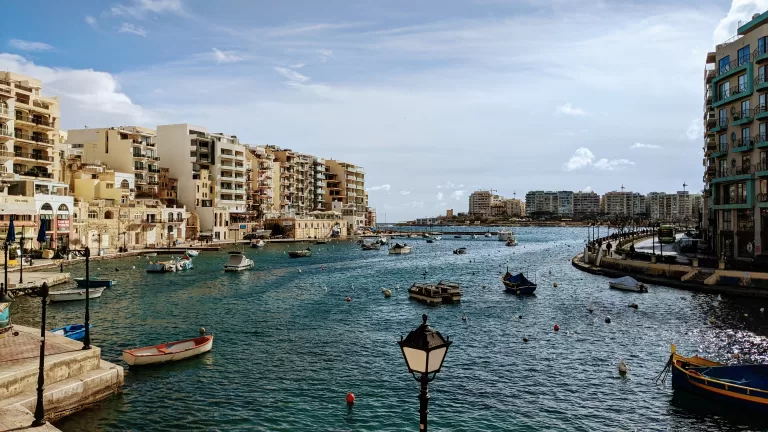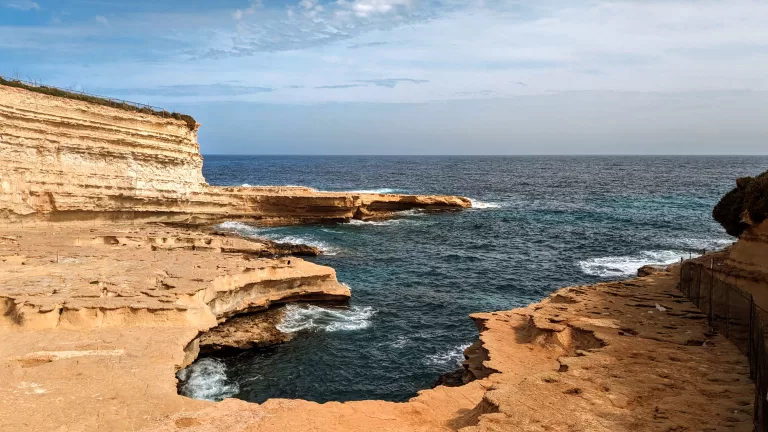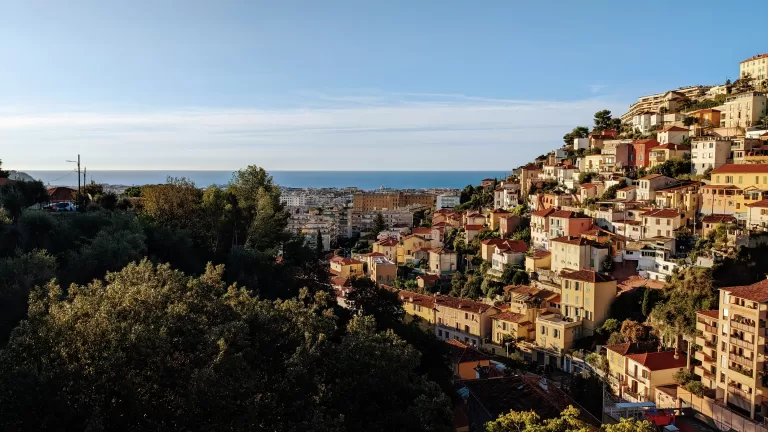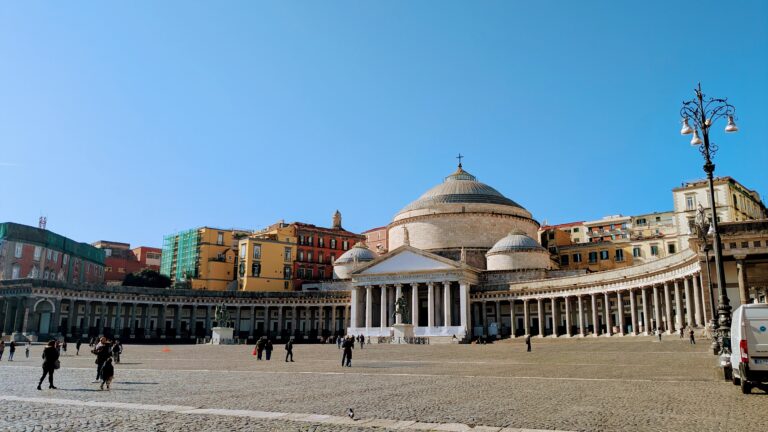16 best things to do in Malta (2025 travel guide)
We’d heard great things about Malta – its stunning coastline, beautiful capital city, historical sights, gorgeous weather – and were lucky enough to spend a couple of weeks there earlier this year. There are so many amazing things to do in Malta, all set in beautiful countryside and gorgeous weather. It lived up to it’s reputation!
This guide collects the 16 things we’d choose again – the viewpoints, beaches, towns and small quirks that made the trip feel authentic, not touristy.
Malta is a tiny country – there’s just 500,000 people. Most of its population is based on the largest island, also called Malta. The second largest island is Gozo and is more rural and laid-back, and there’s a third island nestled between the two called Comino which is uninhabited. All three are worth visiting, but you’ll probably spend most of your time in Malta.
Although small, there’s a ton of things to do in Malta. Read on for our pick of the best!
Quick glance
Best time to visit: May–June and Sep–Oct (warm sea, fewer crowds).
Getting around: Buses are cheap and cover most routes; use Ċirkewwa ferries to Gozo; taxis can be scarce late-evening (download local apps).
Currency: Euro; card is accepted everywhere.
Language: Maltese and English is widely spoken.
Want more on planning and hotels? See our Malta travel guide and the best hotels in Malta.
What are the best things to do in Malta?
Wander around Valletta
Valletta is Malta’s capital city and a UNESCO World Heritage site.
It has small streets and beautiful architecture, which feel like they’ve barely changed in hundreds of years. It’s one of the smallest capital cities in the EU, covering just 0.8 square kilometres and its fortifications date mostly from the 16th century when the Knights of St John ruled the islands. Despite the small size, there’s plenty to see and do in Valletta.
Spending the day wandering around Valletta enjoying its beautiful streets and many bars and cafes was one of the best things we did in Malta. As you wonder round there’s a lot to see, which we’ve featured in this guide as their own entries.
In addition, don’t miss:
- Upper and Lower Barrakka Gardens – Both gardens have beautiful panoramic views over the Grand Harbour and the Three Cities across the water. We’d recommend going to both, and especially at sunset (or sunrise, for the early worms among us)
- Grandmaster’s Palace – A 16th century palace built for the Grand Master of the Knights of Malta. It has art, armour, and tapestries on exhibition.
- City Gates – Valletta has several ornate gates built when the city was constructed in the 16th century.
- Museums – Valletta has several museums covering Malta’s history and culture, like the National Museum of Archaeology and the National Museum of Fine Arts.
If you prefer to have a bit more structure and to hear about the history of the places you’re looking at, consider a walking tour. This one goes to all the main sites and takes about 3 hours.
Why go? Beautiful streets, amazing architecture, and history on every corner.
How long? Half a day minimum but ideally a day to include stops.
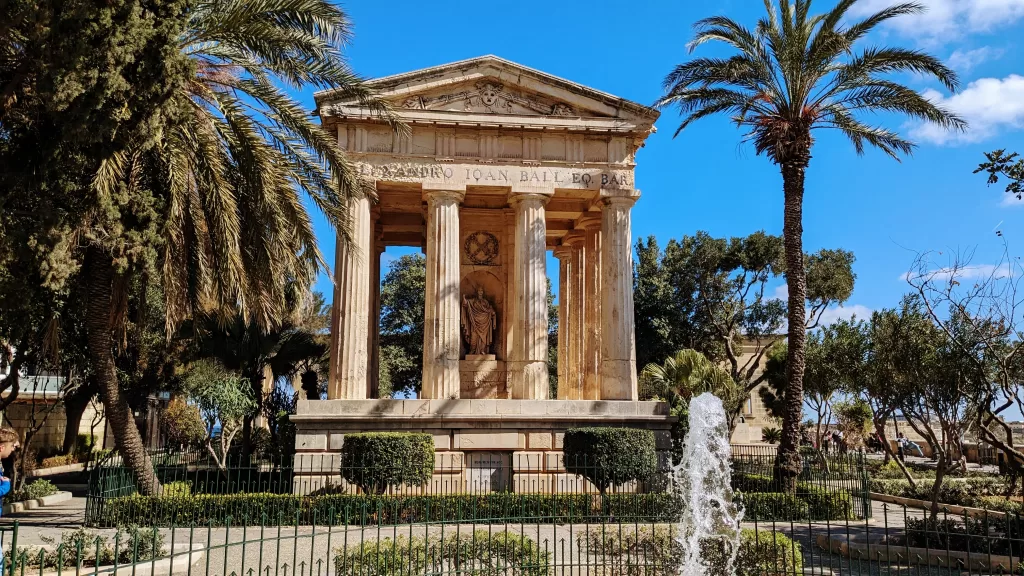
Get lost in Mdina
Mdina was the island’s capital for many years until 1530, when it moved to Valletta. It’s a beautiful walled medieval city, and as its pedestrianised, it’s known as the Silent City.
The city is a maze of winding narrow streets, baroque architecture, palaces, churches, and amazing views over the island. It’s perfect to wander round. There are also a few spots where Games of Thrones was filmed which are fun to find and compare to the series (we had coffee in the square where Ned Stark fights Jaime Lannister).
One of Mdina’s top attractions is St Paul’s Cathedral, a 17th century cathedral that towers over the city. Don’t miss the fresco-covered vaulted ceiling. There are also a few other stops like the Palazzo Falson, which contains artefacts from the past 700 years, and various museums including the Carmelite Museum, the Cathedral Museum and the Knights of Malta Museum.
Tip: It can get pretty busy in the afternoon, so we’d recommend getting there as early as possible (we got there at 10am and it was pretty quiet, with most tourists only coming in as we left)
You could take a tour to Mdina but its easy to get there via bus (several buses go from Valletta – check Google Maps – and it takes about 30 minutes). An Uber would be about 20 minutes. We combined it with a trip to Rabat and St Paul’s Catacombs, which is a 15-minute walk away. This tour combines Mdina and Rabat.
Why go? Quaint, silent narrow streets, beautiful views, and beautiful architecture.
How long? Two hours plus stops.
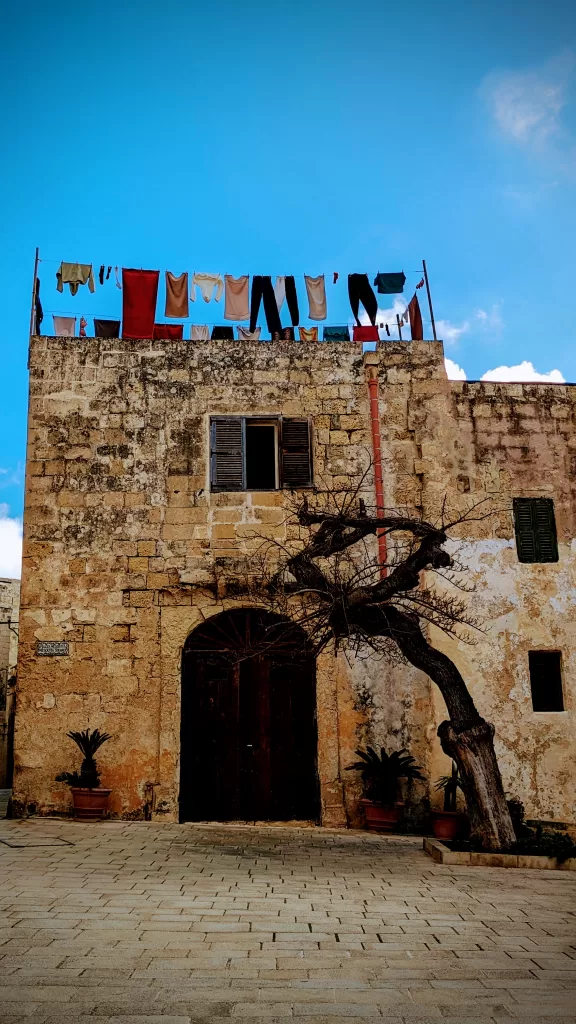
Explore Rabat and St Paul’s catacombs
Just outside Mdina is Rabat, a small town which was once a suburb of Mdina before the city walls were erected. Its full of quaint little streets and shops.
While it doesn’t have the manicured and preserved history of Mdina, we thought it felt alive and ‘real’ being that its still a working town where Maltese people live.
Once we’d finished in Mdina, we walked to Rabat (a 15-minute walk) and had a wonder round (after a coffee break). There are a few stops along the way such as St Cataldus Church and its catacombs, and St Dominic’s Priory.
Once you’ve wondered around Rabat, head over to St Paul’s catacombs. These date back from the 4th century and have a fascinating history, being used regularly from that time to as recently as World War One, where locals would shelter from air raids. There’s a short museum which tells you about the history before you can climb down into the catacombs.
The first one is the largest and we thought the best. Once you’ve come out, you’ll cross the road and go to about 20 further catacombs. Outside each on are signs which explain the period they date to, the religion of the people which built them (the catacombs were used by Jews, Muslims and Christians, among others, over the years) and any unique features. There’s a lot of catacombs so you may want to try and prioritise ones which have different features to the ones you’ve visited.
We enjoyed exploring on our own but consider this tour, which will give you a bit more history than is on the information signs.
Why go? Beautiful streets, fascinating catacombs and an overall great town.
How long? One hour in Rabat plus stops, 1-2 hours in the Catacombs.

Visit Gozo, Malta’s second island
Gozo is Malta’s second largest island and a popular day trip destination – and ended up being one of our top things to do in Malta.
Its quieter than the main island and has a slower pace of life. It’s got a rural charm, with sleepy villages, seaside promenades, and rolling green hills dotted with farms and vineyards.
To get there, you’ll need to take a 25-minute ferry from Ċirkewwa on Malta’s north coast (about an hour on the bus (number 41) or quicker using Uber. Note you may find it difficult to get an Uber on the way back). You can sit on the deck of the ferry and enjoy the view, and there’s a couple of cafes onboard too.
Once on Gozo, head for the Citadel in Victoria. It’s a fortified city which sits on a hill and offers incredible 360 views from the parapets. Wander the narrow streets to see St George’s Basilica and other historic sites.
One of Gozo’s top attractions was the Azure Window, a natural arch jutting out into the sea, but sadly it collapsed in a storm in 2017. The collapse changed the coastline but the area remains worth a visit for swimming, diving and coastal walks.
Some of Gozo’s best beaches include Ramla Bay with its red sand, the quiet cove of San Blas Bay, and the popular Mgarr ix-Xini with its azure waters. Dwejra Bay is a good spot for diving to see underwater caves, coral walls and marine life.
A tour is a good way to see more of the island. This one picks you up from Valletta (and other places in Malta) and includes the ferry over and the day sightseeing.
Why go? Rural Malta, beautiful coastline and pretty countryside.
How long? One day, although there’d be enough to fill another day.
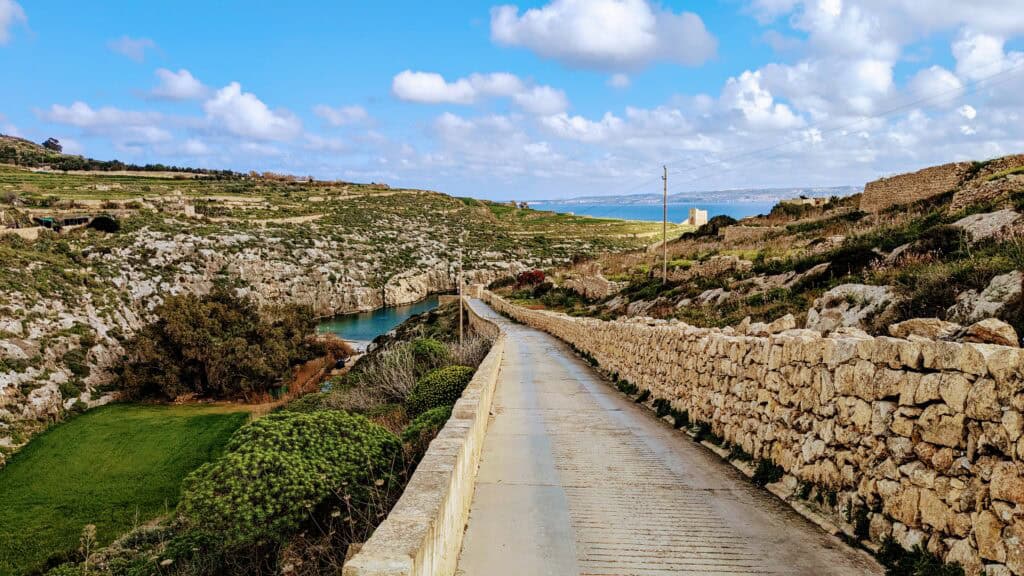
Relax in the Blue Lagoon
The Blue Lagoon is one of Malta’s most famous natural attractions, found between the islands of Comino and Cominotto. It’s known for its crystal clear turquoise waters and white sandy seabed, and it’s a great place to go swimming and snorkelling.
The lagoon is a popular spot for boat tours, which is the easiest way to access it. A lot of companies offer day trips to the Blue Lagoon from Malta, circling the lagoon so you can see the blue waters and rock formations along the shoreline before taking you in to swim.
You’ll see boat trips advertised everywhere or you can purchase them online, which will allow you to read reviews before buying. They combine other attractions in the same boat trip. Be sure to choose the combination which most interests you, as well as check the ‘vibe’ of the boat is right for you – some are party boats, some are quieter. Also check whether they supply masks and snorkels (they may not, or there may be an additional fee).
There is also a ferry available for independent travellers. It gets busy from 10-11am onwards, so get there early if you want to miss the hordes.
For swimming and snorkelling, the best time to visit is between May and October when temperatures are warmest. The water is incredibly clear, with visibility up to 40 meters.
Tip: The lagoon gets crowded during peak season, so it’s best to arrive early (before 9am). The afternoon is also a bit quieter once the morning tour boats leave.
Why go? Scenic swimming and snorkelling spots, easy beach days, and reliable sun between May and October.
How long? Most trips are a full day.
Top up your tan in Golden Bay
Golden Bay is a popular sandy beach on the northwest coast of Malta. It’s almost iconic for it’s golden sand and clear, turquoise waters.
The beach has all the amenities you might need, including sunbeds, umbrellas, showers, and places to eat. Apart from the standard sunbathing and swimming, there’s also various water sports on offer like jet skiing, paddleboarding, and windsurfing.
There’s several cafes and restaurants along the promenade. Prices are reasonable compared to other tourist areas. It’s lovely to watch the sunset here with a beer.
And if you fancy some exploring, there are nearby bays and coves which are well worth visiting including Għajn Tuffieħa Bay, a secluded sandy beach reachable by long staircase, and Riviera Bay, a small rocky inlet surrounded by cliffs.
Why go? Relaxation, stunning coastlines, beautiful blue seas (this is a theme with Malta).
How long? A day.

Explore the harbour in Marsaxlokk
Marsaxlokk is a picturesque fishing village found in the southeastern part of Malta.
The harbour is filled with colourful luzzu boats bobbing about in the water. Each boat has an eye painted on the bow, which is meant to protect fishers from evil spirits.
There’s a small tourist markets to browse, but Marsaxlokk’s big draw (after the luzzu boats) are the fish restaurants next to the water. There are a few vegetarian options too, but you’ll have to look a bit harder.
If you’re able to, plan your visit on a Sunday when the harbour hosts the Marsaxlokk fish market. Local fishermen bring their fresh catches straight off their luzzu boats to sell. Browse the stalls while snacking on a traditional pastizzi filled with ricotta or mushy peas.
You’ll also find a number of small natural beauty spots along the coast. Check Google Maps for these (which will also provide accurate walking routes). We hiked to St Peter’s Pool, a cute natural cove, which took about 45 minutes. Had we had more time, we would have hiked round the coastline – its full of natural pools, viewpoints, coves and sea caves.
Tip: It’s close to the airport (35 minutes via the 119 bus, or 15 minutes via Uber) so its the perfect place to say goodbye to Malta – we went in the morning before our flight out of Malta that afternoon.
Or, consider a tour such as this one, which will also take you to the Hager Qim temples.
Why go? Cute boats and a quiet harbour. And, stunning coastline at natural beauty spots, if you extend your trip.
How long? One hour for the harbour plus stops, but you can easily fill a day by walking the coast.

Visit Popeye Village
Popeye Village is a unique tourist attraction in Malta that was originally built as a film set for the 1980 musical production of Popeye starring Robin Williams. The set was constructed in Anchor Bay, which provided the perfect natural cove to portray the fictional village of Sweethaven from the Popeye cartoon.
Today, you can tour the colourful wooden houses and buildings from the Popeye film set. Costumed actors play the parts of Popeye characters like Olive Oyl and Bluto. There are also boat tours and water trampolines offshore for swimming and playing in the bay.
You can get to Popeye village via the (the 42 is direct, but there’s options with two buses which might be quicker). It takes about 1.5 hours, or you can get an Uber which would take 45 – 60 minutes.
Why go? Unusual destination in a pretty village, and a family day out.
How long? One day, including travel.
Marvel at the Megalithic templates, including Hagar Qim, Mnajdra and Ggantija
Malta has some of the oldest free-standing structures in the world – the megalithic temples – which were constructed between 3600 BC and 700 BC. There are seven megalithic temples in Malta, all of which are listed as UNESCO World Heritage Sites.
The best preserved and most impressive is Ħaġar Qim, located on a hilltop overlooking the sea on the south coast of Malta. It was built around 3200 BC and has a main temple, plus three additional megalithic structures. The temple’s front and internal chambers still have the remains of the original decorations.
Another fascinating temple is Mnajdra, situated near Ħaġar Qim. Mnajdra has three temples built between 3600 BC and 3200 BC.
Ggantija on the island of Gozo has two connected temples, and is the earliest of the Megalithic Temples of Malta. The temples date back to around 3600 BC, making Ggantija older than the pyramids of Egypt.
If you don’t have a car then seeing them is a bit easier on a tour like this one.
Why go? Beautiful ruins and a world heritage site.
How long? 1-2 hours per temple.
Get lost in The Three Cities
The Three Cities refers to the fortified cities of Vittoriosa, Cospicua, and Senglea located across the Grand Harbour from Valletta. They offer a great day out and are often one of the most overlooked things to do in Malta.
Vittoriosa, also known as Birgu, is perhaps the most picturesque (according to us) and historic of the three. Its narrow winding streets are lined with historic buildings, churches, and museums. Walk along the Vittoriosa Waterfront to see the iconic Inquisitor’s Palace and Fort St Angelo. It also contains St Lawrence Church, one of Malta’s oldest churches.
Cospicua, originally known as Bormla, is the largest of the Three Cities. St. Helen’s Basilica is the main church here. You can walk up to the Gardjola Gardens for panoramic views over the Grand Harbour and Valletta.
Senglea, also called Isla, is found on a small peninsula jutting into the harbour. You can walk up to the Gardjola Gardens for panoramic views over the Grand Harbour and Valletta. St. Philip’s Church and the Vedette (watchtower) are landmarks worth seeing.
The best way to reach the Three Cities is by ferry from Valletta. Or, go on an organised trip which is a bit easier, and will mean you can see more of the cities.
Why go? Picturesque cities and history.
How long? One day, for all three.
Have you see our guide on where to stay in Malta?
Take a boat trip to the Blue Grotto
The Blue Grotto is a series of sea caverns with brilliant blue waters that sparkle in the sunlight. The caves can be accessed by small boat tours from the quaint fishing village of Wied iż-Żurrieq. You’ve probably seen photos of them, as they are one of the most famous (and instagrammed!) things to do in Malta!
The water in the cavern glows bright blue and turquoise from the sunlight reflecting off the seabed and limestone rock. The best time to visit is in the morning when the sun is low in the sky and directly hits the water inside the cave.
Boat tours of the Blue Grotto are very popular and run all year round, weather permitting. Tours cost around €8 per person.
Even if you don’t take a boat tour, the Blue Grotto is worth seeing from above. There are some scenic overlook points where you can peer down into the cavern and see the brilliant blue water. For the best views, head to the Belvedere near the parking area.
Why go? Stunning blue seas and beautiful coastlines.
How long? Two hours.
Learn about Malta at the Malta at War Museum
We had a rainy day in Malta (they occasionally do happen) and so thought we’d go to the Malta at War Museum. We’d definitely recommend it – although war may not be your thing, its so much more than that and goes through the whole history of Malta from prehistoric times to now.
It does this in a really interesting way, through interesting artefacts, displays and multimedia, telling the story of the people who lived there. We learnt a lot – did you know that the Knights of St John ran Malta for over 250 years, and still exist today? Or that Malta was a strategically important island during World War II and outlasted a two-year siege?
It gave a lot of context to the rest of our trip – for example, there’s a picture of opera house just after it was bombed, and you’ll see the remains of it, now turned into an outdoor opera house, when wandering round Valletta.
It’s set in a series of buildings in Fort Saint Elmo, at the Eastern tip of Valletta, and boasts some nice views across the sea and of the three cities. You can walk to it from Valletta (and you’ll probably pass it when you explore Valletta).
Why go? Interesting history, fascinating stories and a great way to spend a rainy day.
How long? Two hours.
Relax on one of Malta’s beaches
Malta and Gozo have many beautiful beaches perfect for swimming, sunbathing, and relaxation. We’ve given a few suggestions below, but there’s loads of options. There’s plenty of remote and quiet beaches too, but just make sure that you do your research as some can be a bit more difficult to get to.
The most popular beach is Golden Bay on the northwest coast of Malta. It has golden sand and clear blue waters perfect for swimming and snorkelling. Nearby is Għajn Tuffieħa Bay, another long sandy beach in a more secluded cove. It’s one of the more peaceful beaches as it requires a long staircase walk down to reach it.
For a more isolated and rugged beach visit Fomm ir-Riħ Bay on the northern coast of Malta. Its secluded location means fewer crowds. The water here is excellent for swimming with its shallow entry and sandy bottom. The walk down can be difficult so bring trainers.
Over on Gozo, Ramla Bay has reddish sand and is relatively quiet even in summer. It’s an excellent option for avoiding crowds. If you prefer something quieter, head to Mġarr ix-Xini Bay, accessible by stairs leading down the cliffs. It’s a bit of a secret beach, with azure waters.
Why go? Beautiful beaches, azure seas, stunning coastlines.
How long? Varies widely, but a beach day after a few days exploring can be a welcome break.
Frequently asked questions
How many days do I need in Malta? 3–5 days will cover Valletta, Mdina, and a beach or Gozo day trip. Add 1–2 days for relaxed island hopping.
Do I need to hire a car? Not for Valletta and Sliema – public transport and ferries cover most sights. A car helps if you want remote coves or to explore Gozo off the main bus routes.
Is Malta expensive? Mid-range: restaurants and hotels vary. Eating local (pastizzi, lampuki, casual fish restaurants) is very affordable.
Is English spoken? Yes – English is an official language and widely used.
Our guide to Malta contains all the practical information to help plan your trip.
Final thoughts — which Malta highlights should you pick?
Malta is small but is still packed with things to do. Pick Valletta and Mdina for history, Gozo for slow countryside and diving, and the Blue Lagoon or Golden Bay for classic seaside days. If you’re short on time: one day Valletta + one day Gozo/Blue Lagoon gives a balanced taste of culture and coast.
Want help planning an itinerary? Read our Malta travel guide for practical information on planning your trip, or check our best hotels in Malta to match where you stay with what you want to do.
This page contains affiliate links. If you make a purchase through one of these links we make a small commission to help run this site, at no cost to you. Making a commission never affects the advice we give - see our content policy.

